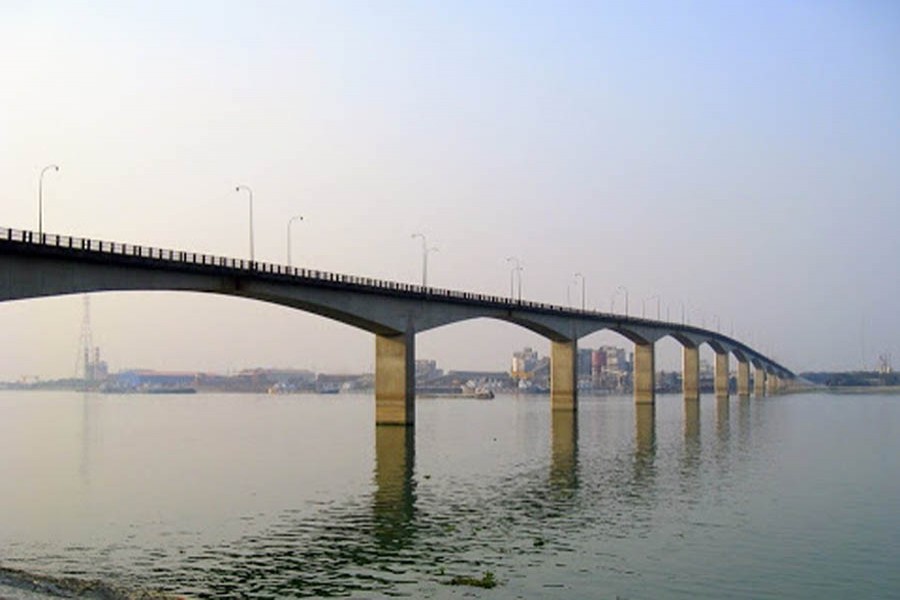As many as 805 bridges all across the country will have to be demolished and reconstructed because those were constructed at a lower height than the standard. A number of these bridges were built recently and construction of a few was still underway only months back, ignoring the request of the Bangladesh Inland Water Transport Authority (BIWTA) not to do so. Construction of Trimohini bridge and Nainichala bridge was thus carried out in defiance of the BIWTA objection early this year. About a dozen of these bridges on the rivers around the city will have to be knocked down for reconstruction with proper height.
Recently the Executive Committee of National Economic Council (ECNEC) approved 10 projects worth Tk 25.7542 billion under which the bridges of improper heights will be taken care of for watercraft to get past such bridges. Goods-laden water vessels cannot pass these bridges because of lack of overhead clearance. What is intriguing is that the government agencies including the Local Government Engineering Department (LGED), Roads and Highways Department (RHD) and Bangladesh Railway (BR) are responsible for construction of these bridges of low height.
The BIWTC reportedly requested the agencies involved in a number of cases not to go ahead with the plan under which those bridges were constructed. Does it give an indication of anything? It surely does. There is a serious lack of coordination between government agencies. It can be assumed that the BIWTA tried to impress upon the agencies concerned of the demerit of the lower heights. But unless the BIWTA's approval is a sine qua non for construction of any bridge on rivers or other waterways for passage of vessels why should they care?
The problematic bridges came to light when the whole gamut of river channels' navigability and their protection from pollution and encroachment was brought under scrutiny by a task force constituted last year for recommending remedial measures. Revival of the country's waterways system is likely to reduce the transportation cost of commodities and at the same time improve environment. An eviction drive against encroachers on the banks of rivers is part of the campaign now being carried out.
In a way, then, the government will have to carry out a corrective drive against its own organs. Perhaps these agencies gave up on rivers forever and did not pay heed to the BIWTA's pleas. But now the country will have to pay a heavy price for their obstinacy. Bridges on rivers have to be constructed at least 25 feet high from the water levels in time of floods for ensuring overhead clearance of vessels. Similarly, horizontal clearance of 100 feet is warranted. Now this gargantuan task will be highly challenging because of the double whammy of getting those knocked down as well as putting in place their proper replacements. It is not just the question of squandering money, but also the time it will take to get those ready for movement of traffic.
One example of the hassle to be encountered is the resetting of at least 8,000 feet railway track when the Tongi railway bridge will have to be given a proper height. Moreover, the Tongi railway stations will also call for reconstruction. Disruptions, inconvenience and wastage of money in the process make a poor commentary on the sagacity of the people involved and placed in high positions of the agencies concerned. A permanent structure costing millions of Taka should not be treated as a child's toy. No one has the right to bleed the exchequer in this foolish manner. Comprehensive plans have to be drawn for construction of infrastructure of this order.
From now on, let there be proper coordination between different agencies so that overlapping works such as carried out by different utility services can be avoided. In the same breath, adequate plan for infrastructure should be in place before their construction. Finally, the BIWTA should be delegated the authority to issue clearance for bridges over waterways.


